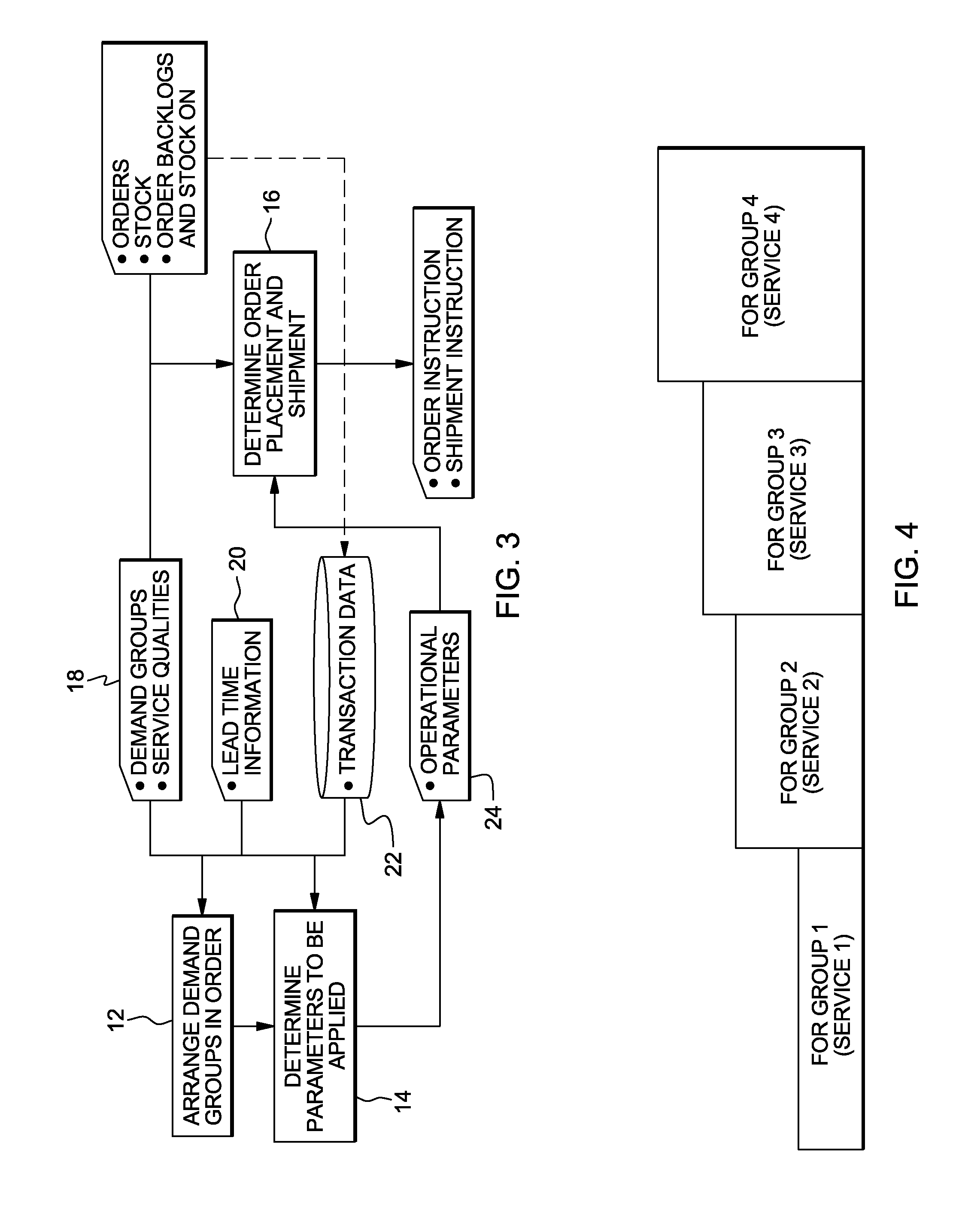Efficient inventory management for providing distinct service qualities for multiple demand groups
a service quality and inventory management technology, applied in the field of inventory management methods, can solve the problems of low average inventory levels, and achieve the effects of reducing safety stock levels, reducing average inventory levels, and reducing costs
- Summary
- Abstract
- Description
- Claims
- Application Information
AI Technical Summary
Benefits of technology
Problems solved by technology
Method used
Image
Examples
first embodiment
[0054]Suppose that the probability of no stockout at the cycle end is set for each customer classes. Stockout refers to running out of the inventory of an item.
[0055]Customers may be rated according to their degree of priority, such as platinum, gold and silver customers and a distinct service level (i.e., probability of no stockout) is assigned for each customer group. For example, different percentages of order cycle service level are given for each group, such as 99%, 90%, and 75%. Assuming the replenishment lead time is 5 days, and its standard deviation is 0 day (no fluctuation), the mean value of daily demands and coefficient of variation (COV) are set as shown in Table 2.
[0056]For comparison, safety stock is first calculated employing a conventional method. In the case where separate stock is held for each demand group (FIG. 4), or where the strictest service level is applied to all demands (FIG. 6), safety stock is 993.5 and 1560.6 respectively as underlined at the lower rig...
second embodiment
[0058]When service quality is differentiated according to order quantity per orderline.
[0059]There are some cases where as much as possible, a stockout should be avoided except for large-quantity orders. That is, a stockout is to be avoided for a small order for 1 or 2 items concerned with repair parts. If such an urgent order cannot be fulfilled immediately, the customer who made the order will experience difficulties. Or if an order for a large quantity is completely fulfilled, this may cause a subsequent shortage of goods for other customers and give a negative impact on the fill rate based on the number of orders. In such a case, after grouping orders according to the quantity per order, a higher service level can be allocated to a group with a lower quantity (e.g. 1 to 3 items).
[0060]Or, if one order is divided and put into different demand groups, a portion of the items ordered can be shipped out.
third embodiment
[0061]When the service quality is differentiated according to the length of a requested customer lead time.
[0062]There is a case where the requested lead time is separately specified for each order. In this case, generally, when safety stock is calculated with the average of requested lead time K and a standard deviation σK, (L−K) can be used instead of the replenishment lead time L. Regarding fluctuation (standard deviation), √(σL2+σK2) is derived from the additivity of variance, and used instead of lead time fluctuation σL. When safety stock is calculated using these methods, and is allocated in accordance with order acceptance timing, and goods removed from stock in hand although they are not shipped out immediately, service quality for the requested lead time can be achieved; however.
[0063]Requested lead times for each order will vary, for example, demands can be divided into the following demand groups: prompt delivery; 1 to 5-day requested lead time; 6 to 15-day requested lead...
PUM
 Login to View More
Login to View More Abstract
Description
Claims
Application Information
 Login to View More
Login to View More - R&D
- Intellectual Property
- Life Sciences
- Materials
- Tech Scout
- Unparalleled Data Quality
- Higher Quality Content
- 60% Fewer Hallucinations
Browse by: Latest US Patents, China's latest patents, Technical Efficacy Thesaurus, Application Domain, Technology Topic, Popular Technical Reports.
© 2025 PatSnap. All rights reserved.Legal|Privacy policy|Modern Slavery Act Transparency Statement|Sitemap|About US| Contact US: help@patsnap.com



